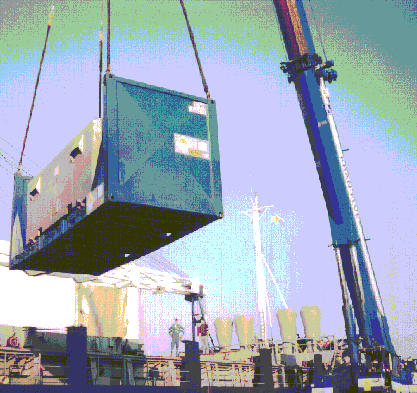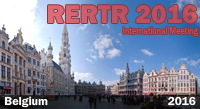IAEA/USA Interregional course on
Preparations to Ship Spent Nuclear Fuel (1997)
Swedish Experience with
Shipment of MTR Spent Fuel
![]() PDF version available
PDF version available
DOWNLOAD full paper in PDF format.
Contact:
Mr. Erik Jonnson
Studsvik Nuclear AB
S-611 82 Nykoeping
Sweden
Tel.: +46-155-221768
Fax: +46-155-263070
E-mail: none
IAEA/USA Interregional Training Course
Technical and Administrative Preparations Required for Shipment of Research Reactor Spent
Fuel to its Country of Origin
13-24 January 1997
Argonne, IL
L.13.8
Swedish Experience with
Shipment of MTR Spent Fuel
Erik B Jonsson
Studsvik Nuclear AB
Summary
The 50 MW R2 research and test reactor at Studsvik produces some 50 spent fuel
assemblies per year. Over 30 return shipments to US of spent HEU fuel have been
performed since the start of the reactor operation in 1960. The US take back
policy was interrupted in 1988 for renewed environmental impact investigations
and meanwhile the stock pile of spent HEU fuel overfilled our reactor pools
and in 1994 we requested emergency return shipment due to insufficient self
protection of the oldest fuel.
The experience from the 1994 emergency shipment and the first shipment under
the final EIS in August 1996 will be described. Both shipments were performed
together with spent fuel from other research reactors in Europe, which comp-licated
the formal procedures for a nuclear transport. The tight time schedule also
put a lot of stress on the authorities, transporter and on the reactor operator.
The TN 7-2 cask, which holds 64 fuel assemblies, was used in both transports
and the Edlow International Co was the co-ordinating transporter in both cases.
Content
1 Introduction
2 Storage facility, crane capacity
3 Transport preparations
4 Cask arrival and loading of fuel
5 Transport
6 Safeguard
7 Conclusions
8 References
Figures 7,-11
1 Introduction
The 50 MW R2 research and test reactor at Studsvik produces some 50 spent fuel
assemblies per year. Over 30 return shipments to US of spent HEU fuel have been
performed since the start of the reactor operation in 1960. The US take back
policy was interrupted in 1988 for renewed environmental impact investigations
(1,2,3) and meanwhile the stock pile of spent HEU fuel overfilled our reactor
pools and in 1994 we requested emergency return shipment (2) due to insufficient
self protection of the oldest fuel.
The experience from the 1994 emergency shipment and the first shipment under
the final EIS in August 1996 will be described. Both shipments were performed
together with spent fuel from other research reactors in Europe, which complicated
the formal procedures for a nuclear transport. The tight time schedule also
put a lot of stress on the authorities, transporter and on the reactor operator.
Both transport were, however, successfully finished.
The TN 7-2 cask (4), which takes 64 fuel assemblies, was used in both transports and the Edlow International Co was the co-ordinating transporter in both cases.
2 Storage facility, crane capacity
The R2 reactor is operated within a concrete structure, which is divided into
three pools by movable doors. Two of these pools are used for storing partly
and fully burnt fuel assemblies. The storage capacity is approx. 200 assemblies,
which covers about four years of operation. The discontinued return of the spent
fuel to US in 1988 created a need for additional storage space. Studsvik had,
however, a special storage facility on the site where one pool was converted
for R2 fuel use. It was refurbished with new epoxy lining, new racks and a submersible
pump/ion exchanger system for water control (5). The initial storage capacity
was 144 cut MTR assemblies. The storage capacity has since been extended.
Fuel assemblies for the two last shipments have been taken from this storage facility where we have our oldest and thus most urgent fuel for shipment. The building is well suited for its task, it has easy access for the cask through a large entrance door. The container with the cask can be taken through the large door directly into the loading area on the truck. It is also equipped with a multihoist crane that can take loads up to 30 metric tons, which means that the largest MTR fuel transport casks can be handled.
3 Transport preparations
The ideal preparation for a spent fuel transport includes
- plenty of time for paper work, alert the authorities about the plans
- request of offers on the cask rental and the transport work
- evaluation of offers to minimise cost
- co-ordination with participating RR, authorities and transport companies
- check availability of casks, certificate valid in all involved countries
- planning of the internal work: write procedures for handling the cask, loading
of fuel baskets, safeguard,
- calculations of fuel isotopic composition, decay heat and radioactivity
and issue of the DOE Appendix A (3)
- arrange supplemental insurance, issue of certificate of financial security
(nuclear liability)
- planning of outside work, trucks, cargo handling including loading onto
ship, arrange physical protection
- final issue of the general transport plan to the Swedish authorities
The real world has been quite different at least for the two last shipments, where much of the planning was made in a hurry with very little freedom to modify the parameters.
The emergency transport in 1994 was decided with a rather short preparation
time for arranging the transport. Due to the process of the EA the cask and
transport co-ordinator was already decided. The major obstacle we encountered
was to persuade the transport firms to use the new regulations for sea transport,
the INF code, which just had been issued but not ratified in the participating
countries. That meant that the transporter in a very late state of the preparation
had to find a ship that fulfilled the INF code. As that was new regulations
not used for this kind of transport there was no ship available and two ships
had to be retrofitted with equipment to meet, in our case, the INF-2 code.
4 Cask, arrival and loading of fuel
We are using the TN 7-2 cask (4), which holds 64 cut fuel assemblies in
four baskets. The cask, surrounded by a weather shield, is fixed onto an open
20 foot freight container The cask and container are rented from Nuclear Cargo
& Services in Germany. They provide the instructions and procedures for
handling the cask. Normally we go through the procedures with all the personnel
and some of the critical steps in the handling are translated to Swedish.
The cask handling group consists of a supervisor, a crane operator, a radiation
protection technician and a technician. The safeguard (i. e. material accounting)
procedures are normally handled by a group from IAEA/EURATOM and the SKI ( Swedish
Nuclear Inspectorate) together with our own safeguard officer.
When the cask arrives, hopefully in good time before shipment, it is directly
taken inside the storage facility by the truck. In one occasion the truck with
the container was too high for the entrance port, but the truck was equipped
with air supported suspension and by reducing the pressure the container was
lowered some 10 cm to allow passage. Compare Figure 2. Inside the building the
weather shield is removed and the baskets and toolbox are unloaded, Figure 3
and 4. The cask is then lifted off the container ( Figure 5) and the empty container
with the weather cover is moved outside, as the space is limited (Figure 6).
The shock absorbers on both sides are removed from the cask and it is raised
in vertical position and the lid is loosened. The baskets are made ready for
loading.
The loading of the cask is scheduled to take two days. The first day the cask
is lowered into the fuel pool. This is a tricky procedure where the cask has
to be lowered very slowly to avoid turbulence in the water and some strings
has to be attached to the hoist ropes to facilitate their removal under water.
This will take up to two hours.
The first basket is then lowered into the pool and the fuel assemblies are
moved from the storage racks to the basket. The assemblies are cut so a special
tool has been constructed to securely grip and hold the assembly during transfer.
Each assembly is identified, in our case we use an under water TV-camera, so
before putting the assembly into the correct basket position the assembly is
moved in front of the camera. Loading of each basket takes less than two hours
and the whole loading can be completed in 8 to 10 hours.
The cask with the lid on is lifted from the pool and drained. The proof that
the fuel assemblies in the cask are unfailed is performed by filling the cask
with fresh deminerlized water and measure the activity increase of water samples
over four hours. The procedure is described in Appendix B of the DOE contract.
The cask is also cleaned outside as it has been in the pool water and after
that a radiation and contamination survey is performed according to the special
scheme provided by NC&S. During the night the cask is also vacuum pumped
to assure that no water is left inside. The next day the cask is placed into
the freight container together with the toolbox and the weather shield is mounted.
The container is than ready for shipment after marking and labelling according
to applicable transport regulations is performed.
5 Transport
The transport outside the Studsvik site must follow a general transport plan approved by the authorities, it contains, among others, all necessary information on the fuel content, choice of route, means of transport, vehicle/vessel and physical protection measures taken. The transport plan is an official document, according to Swedish legislation and as such it is open to the public. The physical protection part of the transport is, however, not official and therefore the exact time, route, ship, etc. is not revealed in the general transport plan.
The transport is planned to start from Studsvik in due time to arrive at the
harbour with minimum waiting time. The container is loaded on a truck and all
paper for the export and transport are forwarded to the truck driver, cargo
handling agent, master of the ship, etc. A transport safety specialist from
Studsvik is present during cargo handling within the harbour area.
Due to special circumstances Studsvik has arranged the loading of the container
onto the ship by a rented mobile crane. However, it is preferable to use normal
container handling cranes within a sea terminal. The loadings 1994 and 1996
are displayed in Figures 7 and 8.
The required equipment on the ship is well regulated by the INF code. DOE has
additionally requested special satellite communication and reporting from the
ship in the last shipments.
6 Safeguard
The safeguard documentation ( material accounting) of the transfer of the fuel
assemblies is drawn up by the responsible safeguard manager of Studsvik. The
last loading in August 1996 was supervised and checked by the IAEA/EURATOM safeguard
team. Their seal was also applied to the cask and the serial number revealed
to the Savannah River Operations Office upon arrival there.
7 Conclusions
In 1994 and 1996 similar transports of spent MTR fuel from the R2 reactor were
arranged and they arrived safely to the Savannah River site. The success of
these transports was not self-evident, as both transports were threatened by
legal actions in the US. The firm determination of the US-DOE staff and the
Edlow International Co concurred together we the research reactor operators
all obstacles and the fuel reached its destination. We are very grateful to
the dedicated people that spent much time and effort to finish the EIS and made
the return of MTR fuel to US possible.
8 References
1. Environmental Assessment of Urgent Relief Acceptance of Foreign Research
Reactor Spent Nuclear Fuel, DOE/EA-0912. 1994
2. Implementation Plan for the Environmental Impact Statement on a Proposed
Policy for the Acceptance of Foreign Research Reactor Spent Nuclear Fuel, DOE/EIS-0218.
1994
3. Final Environmental Impact Statement, Proposed Nuclear Weapon's Non-proliferation
Policy Concerning Foreign Research Reactor Spent Nuclear Fuel, DOE/EIS-0218F,
Feb. 1996
4. Nuclear Cargo + Service GmbH, Handling instructions No 150-050-H-1.0,
rev. 1, 1993
5. Erik B Jonsson, Fuel Storage Handling at the R2 Reactor at Studsvik, IAEA TECDOC-786 1995
Figure 1. Schematic view of the FA storage pool.
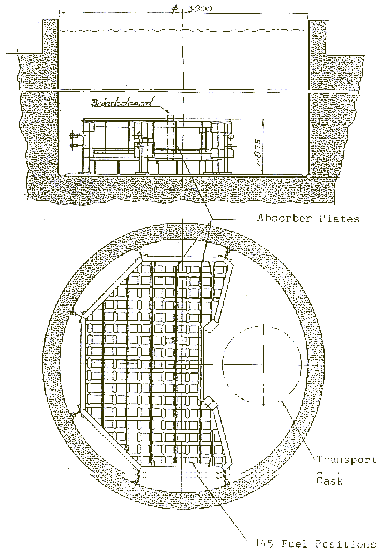
Figure 2. Passage of the freight container through entrance door.
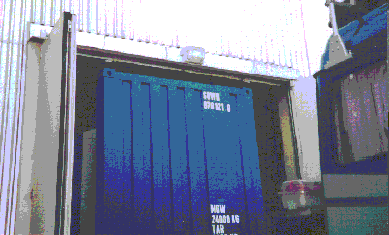
Figure 3. Unloading of basket containers from truck.
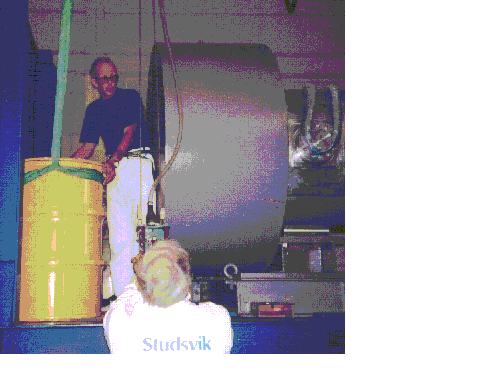
Figure 4. The toolbox for the TN7-2 cask.
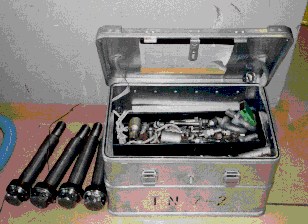
Figure 5. Lifting of the standard cask from the freight container.
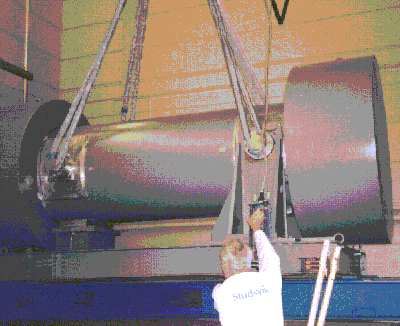
Figure 6. Transport of empty freight container from FA.
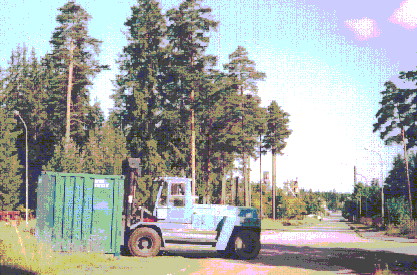
Figure 7. Loading of the freight container onto ship with mobile crane (1994).
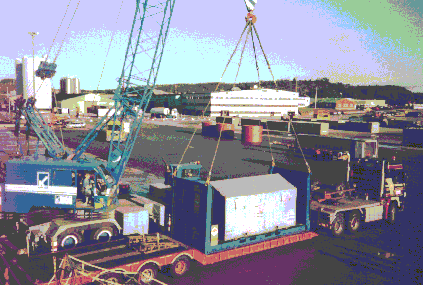
Figure 8. Loading of the freight container onto ship with mobile crane (1996).
